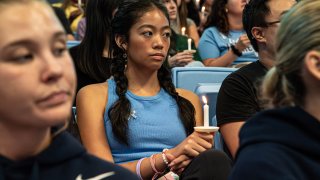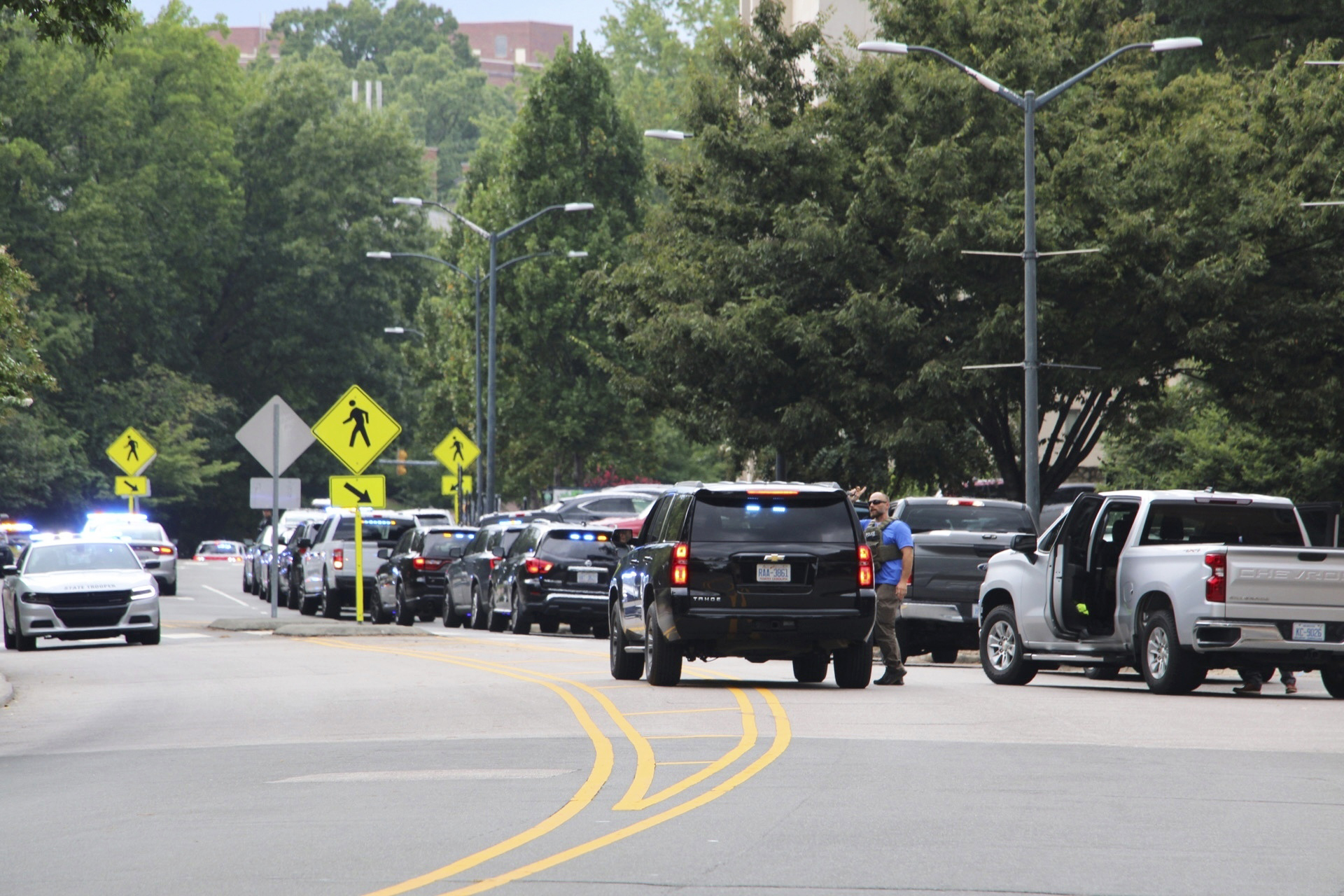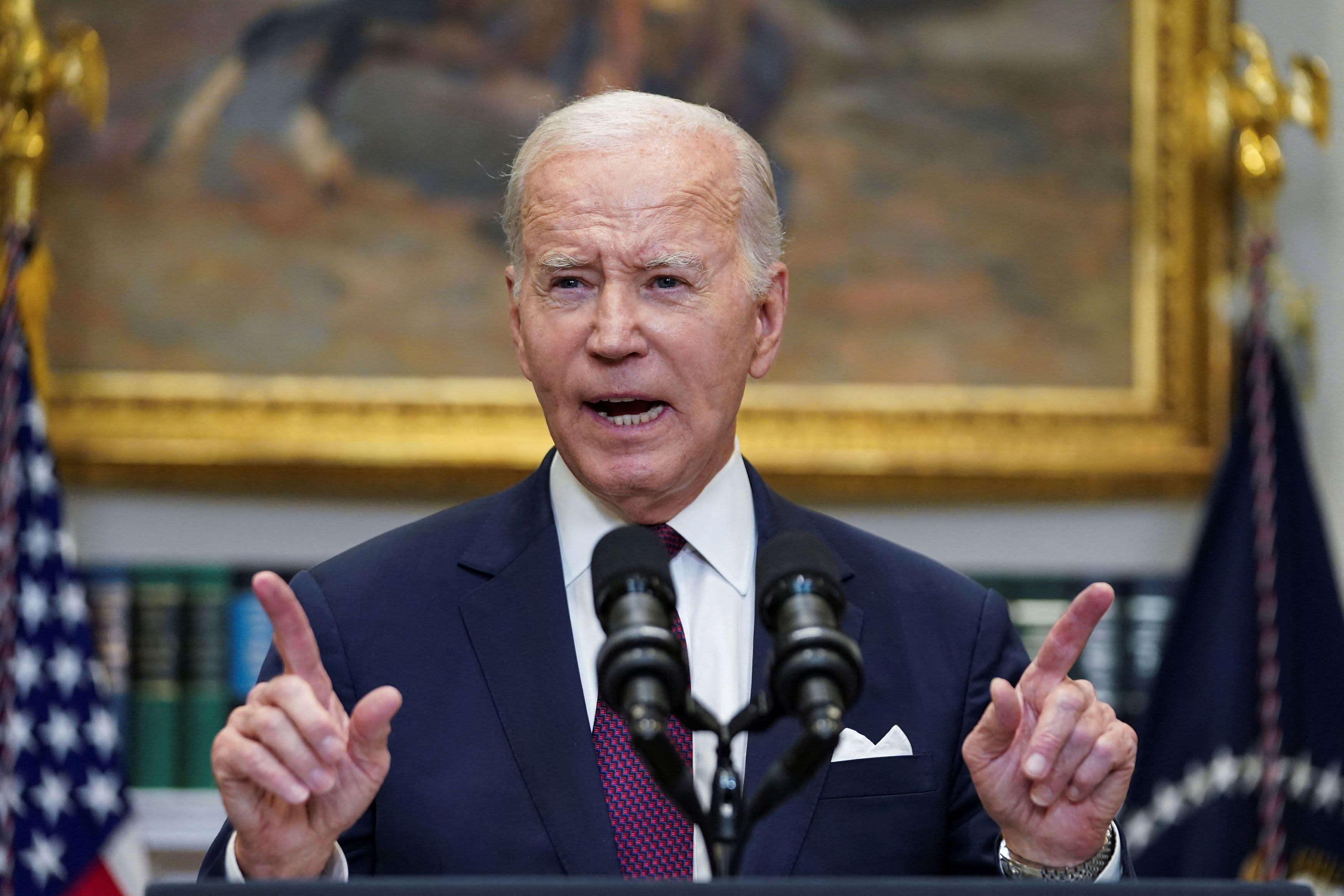
As sirens blared across the University of North Carolina at Chapel Hill and cell phones lit up with alerts of an active shooter, Micah Baldonado cried quietly at his desk while his teacher proceeded with the lecture.
“I know there's no right way to react, but I just lost it,” he said. “I couldn't hold back tears. My teacher actually kept teaching for maybe 30 minutes even after receiving alerts of an active shooter.”
The senior from Charlotte said rumors spread quickly across campus during a three-hour lockdown and police manhunt on Aug. 28 resulting in the arrest of a UNC graduate student.
Tailei Qi, 34, is being held without bond on charges of first-degree murder and having a gun on educational property in connection with the shooting death of associate professor Zijie Yan inside a science building.
We've got the news you need to know to start your day. Sign up for the First & 4Most morning newsletter — delivered to your inbox daily. Sign up here.
Baldonado spent hours listening to the police scanner and reading news reports from inside his locked classroom during what he referred to as an information vacuum. He is one of many students criticizing the school's communication, preparedness and staff response.
The biomedical engineering student has carried a poster board around campus, gathering hundreds of signatures on his petition demanding substantial and immediate improvements to the active shooter response protocol that university leaders maintain was a success.
University of North Carolina shooting
Thanks to the protocol, UNC Chancellor Kevin Guskiewicz said, “this situation played out as best as we could have asked for.”
Most classrooms and auditoriums display a QR code for easy access to emergency instructions and all staff and resident advisers run drills regularly, the chancellor explained at a news conference.
Despite the university’s confidence in its response, students say their teachers appeared unprepared and many grew more panicked in the absence of detailed information.
UNC Police Chief Brian James said a mass electronic alert and siren notified the campus of the emergency two minutes after a 911 call about shots being fired inside Caudill Labs at 1:02 p.m. Qi was in custody at 2:31 p.m., James said.
The campus alert system, however, sent an update at 3:43 p.m. saying the suspect was still at large. At the time of that alert, police were still working to confirm they had the right suspect in custody and there was not an accomplice, James explained.
An Associated Press reporter who was on campus during the lockdown observed hundreds of confused students evacuated from buildings without receiving clear directions before a 4:14 p.m. “all clear” message was sent. Many were left crying and calling their parents from sidewalks, not knowing where to go.
As law enforcement swept his building, Baldonado said he and his classmates asked an officer to slide a badge under the door “because we weren't sure if there was a real police officer on the other end.” He was evacuated before the all-clear message and told by a university administrator to walk toward Franklin Street, a dining and shopping hub, without knowing whether the shooter had been detained, he said.
“We were all pretty much out in the open to be shot,” Baldonado said. “That’s how it felt because we didn’t have any security or information.”
The eventual all-clear message read: “Resume normal activities." UNC did not publicly confirm police had a suspect in custody until a 5:20 p.m. press release.
Liana Evelyn, a contemporary European studies major, found it “callous” to be told to carry on with their day after a deadly shooting.
The freshman was sitting on the steps of the journalism school when the first alarm rang. "It sounded like ‘The Purge,’" she recalled.
Someone pulled her inside the building, which was so crowded with sheltering students that she spent the first hour of lockdown in an open hallway lined with windows before retreating deeper into the building. Several doors did not lock, she said.
Evelyn frantically scrolled Yik Yak, a social networking app known for spreading gossip that provides anonymous messaging within a 5-mile (8-kilometer) radius. The faculty could not offer any information, she said.
A dean's assistant instructed them to leave the building before the all-clear message and the assistant could not tell them where to go, Evelyn said.
Other college news
Rick Amweg, of Ohio-based Security Risk Management Consultants, which works with K-12 and college campuses on security and safety, praised the way UNC police communicated with students and staff, including the information provided and timing.
“They got their initial notification out so quickly,” Amweg said. “That’s key to maintaining a safe campus."
Although campus police didn't announce the all-clear until more than 90 minutes after Qi’s arrest, releasing incomplete information about the suspect’s apprehension when authorities still weren't assured they had everything under control could have been more dangerous, he said.
Baldonado's petition demands locks on all classrooms, better faculty training and enhancements to the alert system, arguing the alerts were prompt but so vague that misinformation proliferated. It says “specific, accurate details about active threats, especially shooters — including their number, location, and movement directions — are crucial.”
Amweg said campus police appear to have appropriately withheld information about the rapidly developing situation until they were sure it was contained and details were verified.
“Keep in mind, this is an ongoing active event, so things are happening very quickly,” he said.
___
Associated Press writer Gary D. Robertson in Raleigh, North Carolina, contributed to this report.






